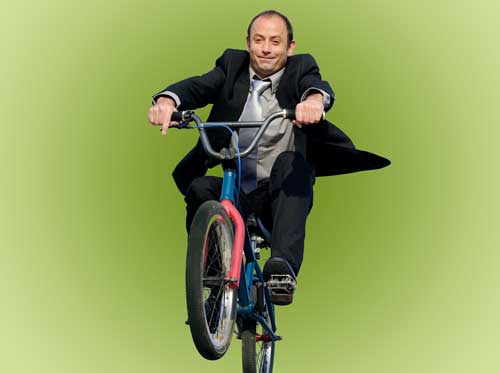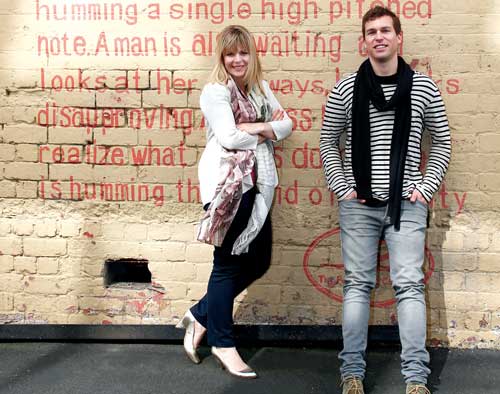The road back to solvency
When a business is staring down the barrel of insolvency, the solution can often be found through the Voluntary Administration regime.
When a business is staring down the barrel of insolvency, the solution can often be found through the Voluntary Administration regime. But many people are either unaware of this alternative or don’t understand how it works. NZBusiness went to BWA Insolvency director Bryan Williams to shed some light.
In 2011, Auckland company Pacific Scaffolding was struggling due to the tight economy, outdated work practices and high fixed costs. The business was staring at liquidation or receivership and more than 20 jobs were on the line.
Of course, we wouldn’t be mentioning this had there not been a hugely successful outcome; a solution that came, not in the form of a wealthy investor, but a company called BWA Insolvency and a law introduced in 2007 which provides a rehabilitation option for companies facing closure, allowing them to trade their way out of insolvency.
Voluntary Administration (VA) allows the freezing of current creditors to gain the necessary breathing space to address the issues consuming a business – and as the title suggests, the process is achieved by the directors appointing an administrator (in Pacific Scaffolding’s case, BWA’s director principal Bryan Williams) who takes control and responsibility of the business while working with the company’s directors to establish the best course of action.
Williams explains that during the early stages (the six-week convening period) a moratorium is established. The administrator guarantees that creditors will be paid which allows the business to continue receiving crucial goods and services to continue operating.
Within the convening period a deed of company arrangement (DOCA) is negotiated and set-up between the business and its creditors. “It’s like a constitution,” explains Williams. “A template for the way the business will conduct itself in the interests of the general body of creditors who’ve had to step back. It dictates how trade will be done.”
Pacific Scaffolding director Mike Robins admits he initially struggled with the concept of handing over control to an outsider, but was surprised at how quickly the BWA team was able to form a rapport with staff and instill the confidence needed to move forward.
Williams says rehabilitating a business is always the priority for his team. “If a business has just a small chance of survival, we will find that chance. We’ll put all our resources into it and make sure it happens. With Pacific Scaffolding we focused on modernising their operations, reducing unnecessary costs and building profitable clients.”
Processes were reviewed and new strategies established at the company – such as a new piecework system where employees were paid based on the job done, rather than an hourly rate. Wages increased by up to 40 percent and productivity by 60 percent.
“Now we’re not losing money on our workforce, they are better paid and work more efficiently – it’s a win-win situation for all,” reports Robins.
After just 12 months and a lot of hard work, Pacific Scaffolding, now operating as Access Scaffolding, is in the final stages of its Administration with total control of the Company about to return to the director. Job done, all parties satisfied.
Little awareness
From his experience, Bryan Williams believes there is little real awareness of the VA regime amongst New Zealand’s business owners. “Even lawyers, whom you’d expect to have the highest comprehension and grasp of its rehabilitative benefits don’t fully understand it. That might be because the law was only adopted in 2007.”
He says the VA law has been effective across the Tasman for 20 years, although in Australia there is an added incentive for its initiation: “while most insolvency processes start as a VA process, they ultimately end up as a liquidation. Many argue that this is due to the fact that if the directors don’t appoint an administrator when they should, they become personally liable for the company’s obligations, such as PAYE and GST. So they’re highly motivated to avoid this happening.
“This is not the case in New Zealand, although there’s provision in the 1993 Companies Act for directors to be exposed for claims of reckless trading if they do not consider VA when it is reasonable that they should have.”
Williams says the VA adoption rate in New Zealand is currently low because of reluctance to relinquish control of the company’s assets. It’s human nature he says, for directors to be reluctant to hand over control. In the Pacific Scaffolding scenario, Williams says the key was Mike Robins’ recognition that it would be impossible for the company to survive without resources. He acted proactively, and early, while he still had resources – which is often not the case. The uptake for the rehabilitative measures of the VA regime will increase when directors understand that VA does not signal the end of the Company but the first day of its new life within which they will certainly feature.
Williams says if all the following boxes can be ticked, then there’s a strong chance a VA will be successful:
• The business will be profitable upon restructuring.
• Utilities and supply lines still remain in place.
• There is sufficient working capital.
• There is someone inside the business that is highly motivated to make it survive.
“The administrator doesn’t conduct the operations,” explains Williams, “but rather creates the environment for the operations to function and for the business to be recreated.
“The objective is to rehabilitate the business – or if that cannot be achieved, then to produce a better outcome for the creditors and shareholders than would otherwise have been achieved by immediate liquidation.” And if a director fails to perform as required under the VA – then he or she is dismissed in a heartbeat, he adds, even if he or she was the appointer.
“The administrator has absolute power over the company’s affairs. The exception being if, within ten days of appointment, a secured creditor appoints a receiver – in which case the receiver would have that power.”
A receivership acts in the best interests of a secured creditor, whereas a VA acts in the interests of all the creditors, explains Williams. And there is a social benefit too, when the business is resurrected – jobs, networks and technologies are saved.
He warns the VA process is a demanding one from the documentary, procedural and deadline perspectives. There is a heavy burden on process and compliance, but BWA has worked hard to streamline the processes, so a VA can be put in place almost immediately. BWA takes a softer, analytical approach to Va’s, Williams points out, rather than a heavy-handed, table-thumping one. The requirements are to preserve the inherent value of the firm, not to find ways of punishing directors for allowing the company to have reached its current state – that’s a job for a liquidator if that is what finally occurs.
Avoiding catastrophe
It’s rare that companies fail through external factors. Williams believes most businesses fail because management doesn’t address issues in a timely way. Poor management performance is the subject of a separate article, but it certainly impacts on the insolvency figures. The graph below shows that the rate of insolvency has been generally tracking upwards. Williams is hoping that more beleaguered companies look to the VA as an alternative to liquidation before they’re beyond the point of no return.
“Future demand will recognise that business failure is a natural part of the commercial landscape,” says Williams, “with the heavy- handed liquidator staying in the shadows while rehabilitative measure’s for a Company’s return to health are considered first.”






